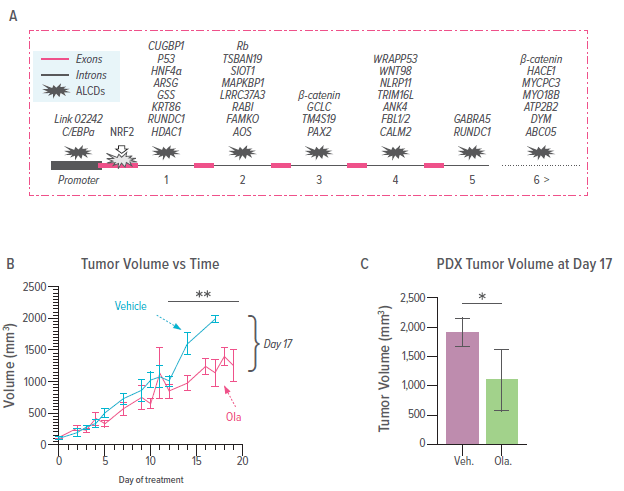PARP Inhibitor Shows Promise Against Hepatoblastoma in Mice
Published May 2021 | Hepatology
Hepatoblastoma (HBL) is a devastating pediatric liver cancer that typically requires surgery to treat. These tumors grow rapidly, have a high risk of metastases, and show poor response to chemotherapy. To date, high-dose chemotherapies have produced significant neurotoxic complications.
Now, researchers in the Division of Pediatric and General Thoracic Surgery report that the chemotherapy drug Olaparib hampers tumor growth in mouse models via suppression of key molecular pathways active in aggressive HBL.
A research team led by first author Michael Johnston, MD, and senior author Nikolai Timchenko, PhD, examined the role of human chromosomal regions, called aggressive liver cancer domains (ALCDs), in HBL development. They found that these normally closed regions were open among patients with aggressive HBL, and were activated by the protein PARP1.
Next, the team used patient-derived xenografts—tumor tissue taken from patients and implanted into mice—to develop regimens targeting the PARP1 pathway. When treated with Olaparib, a PARP inhibitor, tumor growth slowed through suppression of heterochromatin-repressing genes regulated by the ALCDs.
“Our study opens the door for alternative chemotherapy regimens in the management of HBL,” Johnston says. “In knowing the tumor’s ALCDs, targeting and suppressing the expression of the genes key to the tumor’s survival can result in significant reduction in the tumor’s growth and malignancy. This can translate to improved outcomes in patients diagnosed with HBL and an alternative regimen in patients with multi-drug-resistant tumors.”
Next, the Timchenko Lab plans to study Olaparib in combination with other chemotherapies, which could help establish a regimen strong enough to treat the tumor and with reduced risk of negative side effects.
Olaparib Hampers Tumor Growth in Mice
These graphs summarize information on the aggressive liver cancer domains (ALCDs) and effects of treatment with Olaparib on hepatoblastoma patient-derived xenografts (PDXs).





